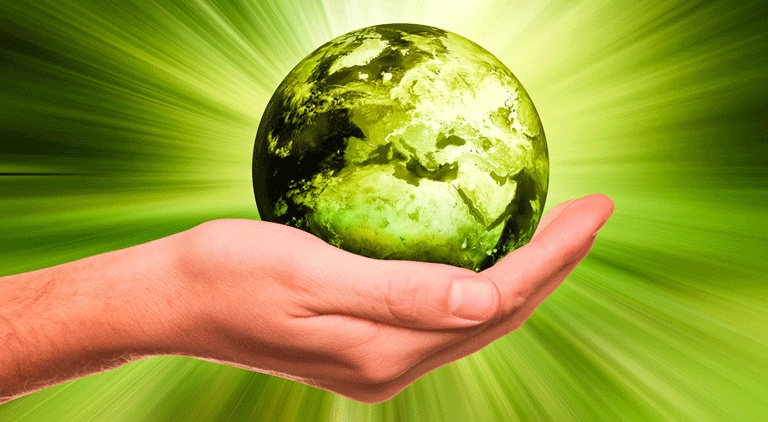Waste to generate India’s bio-economy
By EPR Magazine Editorial December 12, 2019 3:24 pm IST
By EPR Magazine Editorial December 12, 2019 3:24 pm IST

Waste to energy plants that converts non-biodegradable wastes, have been facing criticism. But with the impending popularity of renewable energy and government’s push to promote the renewable energy sources, there is a scope. Biogas players discuss the required implementations into the sector that could aid pull off the renewable energy target of 260GW by 2024.
India’s waste-to-energy sector, which kicked off in 1987, is still searching for a successful role model, even after tens of millions of dollars of investment. Recently, many ambitious waste-to-energy projects are being planned in different parts of the country in the hope that things will brighten up in the coming years.
Potential for energy generation from waste in India
In 2007, the installed capacity of WTE was 43.45 MW, In April 2017, it was 75.80 MW which included urban 3.50 MW and industrial 72.30MW. The cumulative achievement reached 138.30 MW as on 31st December 2018. Srinivas Kasulla, Biogas Consultant and Expert, highlights that for an ambitious objective of 175GW by 2022m we will need a five-fold increase in the WTE sector.”
According to the MNRE, there exists a potential of about 1700 MW from urban waste (1500 from MSW and 225 MW from sewage) and about 1300 MW from industrial waste. The potential for compressed biogas production from various sources in India is estimated at about 62 million tons per annum.
Vinayaka Kashyap, Partner, Quantum Green says, “Compressed biogas plants are proposed to be set up mainly through independent entrepreneurs. CBG produced at these plants will be transported through cascades of cylinders to the fuel station networks of OMCs for marketing as a green transport fuel alternative.”
Going forward, compressed bio-gas networks can be integrated with city gas distribution (CGD) networks to boost supplies to domestic and retail users in existing and upcoming markets. Besides retailing from OMC fuel stations, compressed biogas can at a later date be injected into CGD pipelines too for efficient distribution and optimised access of a cleaner and more affordable fuel.
Data from the government and other related sources, reveal that what’s burning in the fields across India, agriculture residues biomass waste, is somewhat close to 500MMT. Lt. Col. Monish Ahuja (Retd), Managing Director, PRESPL says, “With this humongous amount of biomass burnt in the fields, which is equivalent to 5000 Lakhs MT of biomass. With 1 lakh tones of biomass, we can generate 10MW electricity for a whole year. If we utilise the potential and convert everything into electricity, we can generate 50,000MW electricity per annum, just from biomass, which is 50GW of renewable energy from biomass alone.” Currently, India generates around 8 GW from biomass sources.
However, this is the only sector where 70 per cent of the tariff value is returned to rural community, in some or the other form. “With the numbers which are being given back, I don’t find a single reason for not doing it. My view is, if this is the kind of potential that is already with us, and then the concerned stakeholder should accept their responsibility and act towards a bio-economy to be built sustainably in India”, Ahuja adds.
Jal Shakti ministry is the official nodal ministry, responsible to address all the water related concerns across the country. Ahuja suggests that similarly, we need to have a nodal agency, preferably a ministry for the biomass sector to address every related issue of the bioenergy sector.
Highlighting the agricultural sector’s contribution in biomass energy generation, Bhavesh J. Kakadiya, Managing Director, Jiya Eco Products Ltd; says, “More than 350 million tonnes of organic waste is generated from agricultural sources. All these can be utilised for the manufacturing of bio-fuel. The government, is expected to strongly focus on the use of bio-fuel to curb the pollution, as India is one of a country to sign many agreements on an international level for climate change and pollution.”
General sentiment towards waste to energy
Waste-to-energy (WTE) is different from other renewables viz., solar or wind, as WTE essentially aims to reduce the massive amount of solid wastes accumulating across the country. In addition to managing wastes, WTE has the added advantage of producing energy viz., biogas/bio-CNG/electricity which can be used to meet rapidly increasing energy requirements of the country.
Lack of segregation at source, is one of the major challenges faced by municipalities in effective treatment of waste. We believe if the waste is treated and managed at source, major load on the municipality will be reduced. It not only reduces the dependency on municipality for picking the waste also removes all black spots in the city.
“Even today, waste is considered as least priority in any industrial process flow chart and everyone wants just to get rid of it, without realising the actual potential of it.”Nobody wants the treatment unit in their backyard, though everyone wants the treatment solutions but far away from their communities.
Srinivas Kasulla, Biogas Consultant and Expert
“Liasioning with various local agencies for various approvals and payment collection is another concern area.”
Manoj Gupta, VP, Solar and Waste to Energy Business, Fortum India Pvt Ltd
Raw- material “(agriculture waste) is available in abundance in India, but one of the biggest challenges is to procure the same from farmers.
Bhavesh J. Kakadiya, Managing Director, Jiya Eco Products Ltd
With 1 lakh tones of biomass, we can generate 10MW electricity for a whole year and on converting it, we can generate 50GW electricity per annum.”
Lt. Col. Monish Ahuja (Retd), Managing Director, PRESPL
We use cookies to personalize your experience. By continuing to visit this website you agree to our Terms & Conditions, Privacy Policy and Cookie Policy.